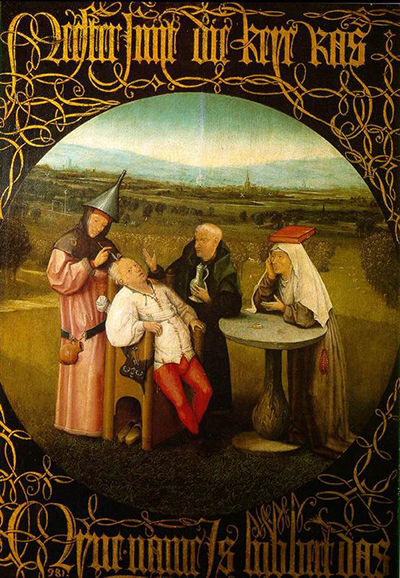Art within the 15th and 16th centuries would occasionally make use of a them called Cutting the Stone
This theoretical operation would involve removing the stone of madness from inside the patient's skull. This idea is laid out to bare by Hieronymus Bosch in this painting from around 1494.
Our artist here chooses to replace the usual stone with the bulb of flowers in order to alter the symbolism of this painting. Despite that, it is still refered to as a stone in several different titles that the artwork has received, including Cutting the Stone, The Extraction of the Stone of Madness and also The Cure of Folly which is the title we stick to.
The most interesting element of this painting is perhaps the beautiful gothic inscriptions that decorate the curved frame. The wording translates into English as, "...Master, quickly cut away the stone. My name is Lubbery Das...". This was the name of an amusing character from Dutch literature.
There has been much discussion over past centuries about this painting, particularly in the symbolism of each figure in the work. Some have argued that the hat worn by the doctor is to symbolise his own madness whilst others have claimed that the flower used in place of a stone is to signify the doctor as some sort of charlatan.
Sat behind this scene of madness is a calming, beautiful landscape that picks out the occasional roof top below a bright, alluring sky. It is possible that this countryside scene in the Netherlands still looks relatively similar today, depending on whether this region was to become much more populated in the years since.




